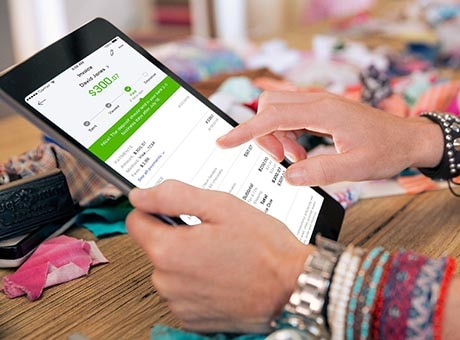Small businesses rely on cash, but it’s also important to manage that cash effectively to avoid problems. The burn rate is the pace at which you spend down your cash reserves. It offers a way for you to measure how fast you’re going through your bank balance and helps you estimate how long your business has before it runs out of money. Understanding the two different types of burn rates, the gross burn rate and the net burn rate, can help you manage your cash.

Burn Rate: How Much Cash Does Your Company Use?
Calculating Gross and Net Burn Rate
Burn rate helps you see how much money you spend, especially when you’re first getting your company off the ground and don’t have a lot of sales-generating revenue to cover your expenses. Your gross burn rate is the total amount of money you spend in a certain period, and you typically calculate it on a monthly basis. If you have $10,000 of total operating expenses each month, your gross burn rate is $10,000 because this is your actual cash outlay for operating expenses.
Your net burn rate is the difference between the revenue you take in and your expenses. This calculation comes in handy if your company already generates some revenue, because it can be a gauge to show how close your revenue is to covering your expenses. If your total expenses are $15,000 and total revenue is $8,000 for a certain period, your net burn is $7,000. If your total revenue is $20,000 with the same $15,000 in expenses, you have a profit. Companies with a positive net income typically don’t use the net burn rate metric, because it is more useful for new businesses trying to determine how long they have before they burn through the initial startup capital.
Understanding Your Runway
Knowing your burn rate is only useful if you apply your knowledge to long-term planning. One way to do this is to use the burn rate to calculate your runway, or the amount of time you have before you run out of cash based on how much money you have in the bank. To calculate your runway, divide your burn rate by the total cash reserves. This calculation lets you figure out how long your company has to survive on your current bank balance. If your company has a burn rate of $5,000 per month and a cash balance of $75,000, your company can survive for 15 more months before you run out of money at your current rate.
How to Change Your Burn Rate
If your burn rate shows you’re using up your cash reserves too quickly, you may need to slow your burn rate by spending less money or increasing revenue. Continuing to spend at the high burn rate may cause you to run out of cash before you can increase your sales enough to cover your expenses. If you shift your expenses to a fixed-cost structure, you increase the risk profile of your company, but this lets you keep more profit as your company expands and decreases your overall burn rate. You can monitor receivables by shortening your payment terms or offering additional ways for suppliers to pay. You can also perform cash flow management techniques such as delaying debt payments until immediately before they’re due to maximize the amount of interest revenue you may accrue. If you are building a new business, you can also seek new investors to extend your runway.
Importance of Tracking Burn Rate
If you know your burn rate, you’re better prepared for long-term success. If your burn rate shows a rapidly diminishing runway, you may decide to put off large cash outlays, for example. Knowing your burn rate may be a motivator to cut your expenses or find ways to rapidly increase your revenue to cover the difference.
A high burn rate can also impact your business in other ways. Creditors may hesitate to give you loans if your burn rate is too high. Your suppliers may tighten credit terms as your burn rate increases to protect themselves from your potential default. Although these are normal business practices, calculating your burn rate and finding your runway period gives you the information you need to plan and increase your chances of having enough cash on hand.
When you’re starting your business, tracking your burn rate is important for knowing how long your cash can last. Using accounting software can help you track those expenses and revenue to more easily calculate burn rate and other metrics. Improve your cash flow with invoices, payments, and expense tracking. See how much cash you have on hand with QuickBooks.


